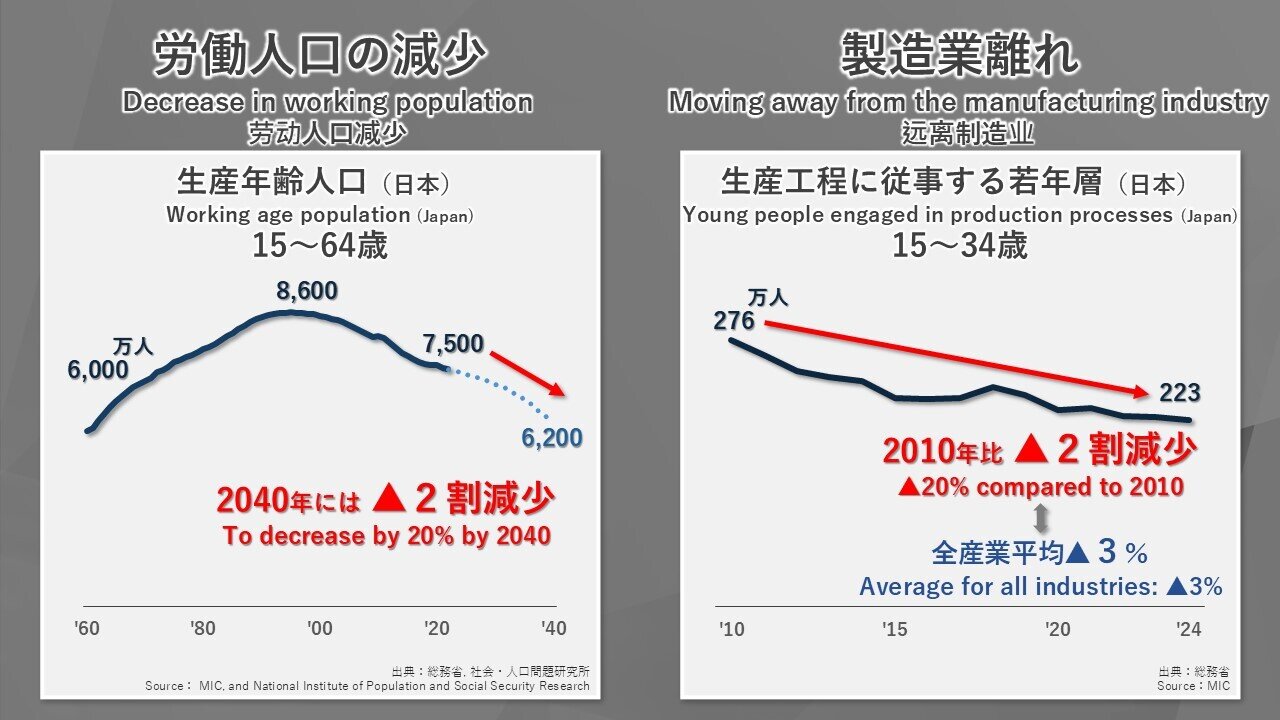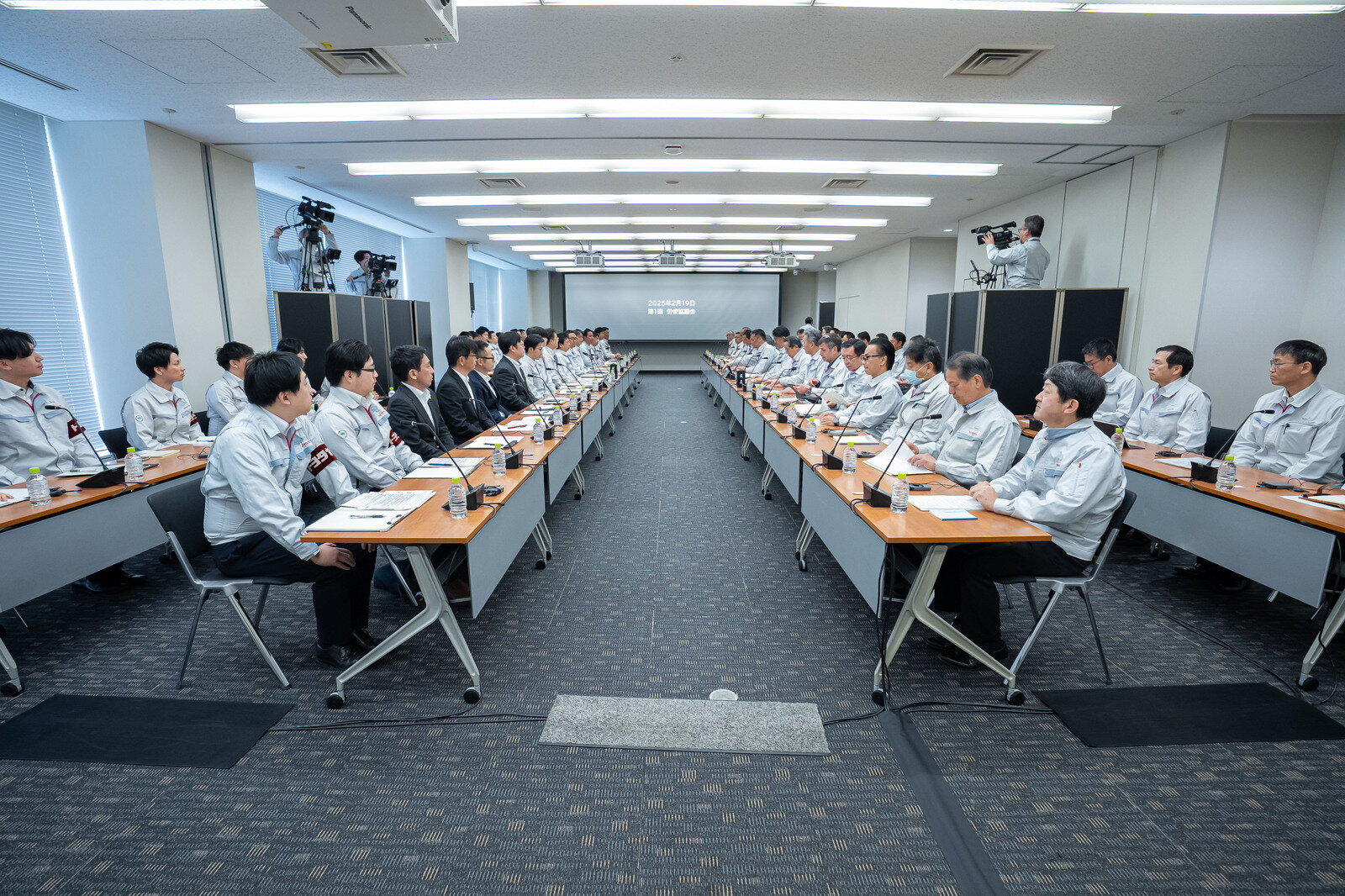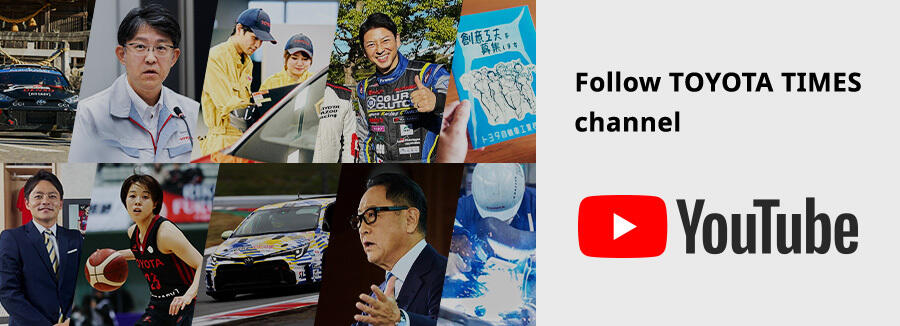
Toyota chose to hold the second round of labor-management discussions at the group and company levels. What was the aim and rationale behind this unusual proposal? Before the sessions took place, we interviewed President Koji Sato and General Administration & Human Resources Group Chief Officer Takanori Azuma.
What is expected from group-level talks
We also asked the pair what outcomes they expected from the second round of discussions.
In his response, President Sato emphasized that he wanted employees to be conscious of their environment.
President Sato
I believe Toyota is in a position to take on various challenges for the future.
If you need a test vehicle, for example, you can buy one and drive it or disassemble it as much as you like. But how do you translate that into returns? Without that kind of mentality, the fixed costs just continue to balloon.
Toyota is big, which means it would fall that much faster. We cannot grow sustainably unless we continue to increase productivity.
In Japan, the working population is going to drop by 20% within the next 20 years. Basically, we have to raise productivity 20% to remain even with today.

This is a really daunting situation. We all need to keep raising productivity.
In this context, I want everyone to have a healthy sense of urgency and be aware that we cannot afford to simply talk about the hard work we have done.
The fact that Toyota is now able to tackle new challenges is thanks to Chairman Toyoda, who spent 15 years building the company’s business foundations.
Normally, if you’re undertaking something on a scale that could bring down the company, failure is not an option. But he tells us, “It’s okay to fail.” I think our employees need to appreciate how fortunate we are.
If we talk about raising productivity by 20%, the idea is so broad that people may not know what they should actually do.
But it’s just about taking one step forward. If we keep doing that, the company will change. I think it’s important that we all try to change it together.
I don’t expect a single discussion to solve everything. But if, under the guidance of chief officers and presidents, employees make a decision about something that leads to change, that experience will show them they can transform the company by speaking up. I think that will empower their voice for next time.
Group issues should continue to be discussed within the group. I hope that we can pave the way for that over the next year.
The other thing I am looking for is commitment from the chief officers and presidents. I want them to be prepared to make decisions and take responsibility for carrying them through.
In individual workplaces, the head figure that people see is the chief officer or the president. They decide matters on the ground themselves. Making a decision is scary—you might worry whether it aligns with the company’s direction, or if you are the right person to decide. Even so, we want them to make decisions.
As one of the people behind the new format for labor-management talks, Chief Officer Azuma reflected on his own engagement with the organization while urging staff to “approach the discussions with a sense of ownership.”
Chief Officer Azuma
After the first round of talks, I began thinking about what I should do with my own group and got to work.
But that isn’t how things should be, is it? I was in charge of the group last year, and the year before as well—I should be taking action regardless of the labor-management discussions. But when it’s a week out from the talks, you feel pressure to act.
I think the sense of ownership was lacking, and I wasn’t doing anything. That may be even more the case for those in charge of other groups or companies, many of whom probably think of the labor-management discussions as an HR event.
Being a new approach, it may not work well. Workplaces won’t be candid, which means leaders can’t make decisions. But if that’s the reality, we have to start from there.
Even just decide on one thing. The team may not be impressed, but I see this as a way to practice looking at and engaging with the workplace.
Commitment is being asked of not only presidents and chief officers. President Sato added his thoughts:
President Sato
And then it will be our turn, as the executive team, to prove our commitment. We have to trust the chief officers to make their own decisions and take action. I think that is a training opportunity for us as well.
If we’re saying, “Let’s start by taking action,” we must demonstrate that through our own actions. We don’t know if we will succeed either.
But if we want everyone to be involved, and we recognize that circumstances differ from workplace to workplace, I think we have to try something.
We need our discussions to be more rooted in the workplace. Yet this doesn’t mean a roundtable gathering—at the first round of talks, I emphasized that these are to be labor-management discussions at the group level.
At a roundtable, if we discuss something and gain a deeper understanding, then the session has served its purpose. But this time it’s not enough to say, “We understand each other.” For our part, we will stay quiet and offer support. As I’ve said, we are handing over authority, so decide whatever you like. Take action. Be bold.

If a matter cannot be finalized through workplace talks, or if our HR systems and other company structures pose a roadblock, then we can discuss things collectively.
On the administrative side, what kind of guidance is HR providing for these group- and company-level discussions?
“The only aspect that is set is that all workplaces will hold their talks simultaneously on the 26th,” explained Chief Officer Azuma. “However, I don’t think anything can be achieved in just a single session. We’ve left it up to each team to decide what they do before and after the second round of talks, and beyond.”
Shifting the labor-management discussions, which usually bring together representatives from across Toyota, to individual groups and companies is an unprecedented undertaking. Our interview with President Sato and Chief Officer Azuma also suggested widespread confusion within the company.
At the outset of the first round of talks, President Sato commented that “taking action is the only way to dispel anxiety.”
The hope is that this experiment will turn a vague sense of anxiety into a “healthy sense of urgency,” spurring each individual—regardless of position, title, or the line between labor and management—to have a sense of ownership and take action.
With this next round of labor-management discussions, the aim is to get everyone involved.

